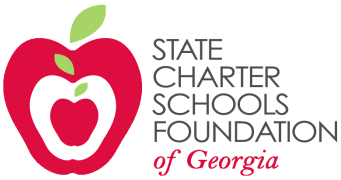 The State Charter Schools Foundation of Georgia is a nonprofit foundation dedicated to supporting high-quality state charter schools that serve children throughout Georgia. The foundation seeks to leverage resources from private and public charitable sources to help schools launch, build capacity and grow.
The State Charter Schools Foundation of Georgia is a nonprofit foundation dedicated to supporting high-quality state charter schools that serve children throughout Georgia. The foundation seeks to leverage resources from private and public charitable sources to help schools launch, build capacity and grow.
As the State Charter Schools Foundation heads into its second year it has two major areas of focus. The first is to fundraise for and distribute four $25,000 capacity-building grants focused on human capital at charter schools for the 2019-2020 school year. The grants will fund items like teacher professional development, teacher recruitment as well as talent and leadership development. The foundation is currently working to raise the funding and hopes the number and size of grants will grow in subsequent years.
“We really see that as a huge lever to expand high-quality seats, give more children opportunity and advance the needle for education in Georgia,” said Laura Bollman, President and CEO of the State Charter Schools Foundation. “These items are going to put the best people in front of our most deserving children.”
Bollman said additional funding for capacity building is needed because state charter schools, like many education institutions, remain underfunded. She said Georgia House Bill 787 was a huge win for state charter schools because it helps close the funding gap between state-authorized charter schools and Georgia’s traditional schools. However, according to Bollman, a funding disparity of $300 per pupil for brick-and-mortar state charter schools still exists. That gap is significant when you factor in a school’s total enrollment and when you consider facilities and financing. Traditional schools typically have greater access to SPLOST funding and other revenue sources, which can help them purchase buildings, improve facilities and construct athletic fields. State charter schools, on the other hand, have to use a portion of their funding to pay leases, construct buildings and to maintain their facilities. Bollman said the gap is also more significant depending on where a school is located. State charter schools in Georgia also do not receive local property tax dollars. Instead, they receive the majority of their funding from the state and a small portion from federal sources.
State charter schools are also unique because each one is its own Local Education Agency (LEA) or local school district. As a result, state-authorized charter schools have additional needs beyond those of local charter schools. The State Charter Schools Foundation hopes providing additional grants funding will help more state charter schools meet those needs.
In addition to raising grants funding, the SCSF also plans to focus on assisting charter schools in the areas of affordable facilities and fair financing. Bollman said nationally charter schools spend approximately 11 to 13 percent of their per-pupil funding on facility leases, debt service, interest payments and other building and maintenance expenses. As a result, the foundation hopes to provide technical assistance and research-based support to help schools identify fair rather than potential predatory lending and financing partners. As part of the assistance, the SCSF wants to help schools better negotiate lease terms, evaluate financing options, collect RFPs and look at long-term finance and facilities plans.
To gain a clear picture of what the current facilities and financing environment look like for charter schools in Georgia, the State Charter Schools Foundation plans to perform a facilities and financing landscape analysis this fall. Schools will be asked to participate in a survey and a follow-up interview so the SCSF can understand what Georgia charter schools are paying on average for lease payments per month, the average lease length, potential penalties for terminating leases and other important facilities and financing data. Information from the analysis is expected in early 2019. Once the analysis is complete, the SCSF plans to develop a more targeted strategy to assist schools.
“We want to help schools ensure that as much public funding goes to teachers, students and classroom and less is going to the coiffures of private lenders and developers,” said Bollman.
Once the analysis is complete, the SCSF plans to develop a more targeted strategy to assist schools. The foundation also hopes to launch a direct school capacity building team to support schools in lease negotiations and evaluation of their financing options.